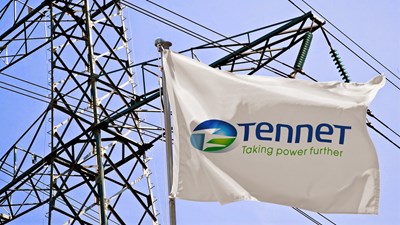Amsterdam, the Netherlands
Amsterdam’s low emission zone (LEZ) doesn’t just have an impact on diesel cars, but also on commercial vehicles, taxis, buses, motorcycles and more. Approximately 3,000 public charging points will provide your EVs with electric fuel.
From 2025, the Dutch capital will even instate an ICE ban: only zero-emission vehicles will be allowed. The regulation will apply to newly registered vehicles from 2025, except for private passenger cars. Until 2030 at least, for that is when Amsterdam reportedly plans to become a fully emission-free place.
You can load and unload goods in Amsterdam from Monday to Saturday. Lots of areas – especially in the inner city – use their own specific timeframe, though. That period usually stretches from 7 a.m. to 11 a.m. or 12 p.m., but make sure to check the details in advance for the district you’d like to enter.
Antwerp, Belgium
Antwerp has a 24/7 low emission zone that covers its entire city center and a part of the Scheldt river’s left bank (the ‘Linkeroever’ area). Electric vehicles are allowed to enter, of course, but must complete a free registration process – unless they have a Belgian or Dutch license plate. The city boasts about 1,000 public charging points.
In addition, Antwerp counts more than 60 car-free and pedestrian zones. Entrance by EV may only be possible during a certain timeframe, or if you have a special permit.
Brussels, Belgium
Brussels’ 24/7 low emission zone includes all 19 municipalities of the Brussels-Capital Region. The Belgian capital has about 1,400 public charging points, and various semi-public ones at, for example, gas stations, public car parks, and supermarkets.
The city center has a large pedestrian zone that prohibits all vehicles from entry. Loading and unloading, however, is allowed from Monday to Saturday between 4 a.m. and 11 a.m. In the Pentagon (Brussels’ historical heart), vehicles are equally banned. Loading and unloading is permitted on the same days, but only from 7 a.m. to 11 a.m.
Keep in mind that the municipality of Ixelles (Dutch: Elsene), has a limited traffic zone called ‘ZAL’ (zone à accès limité). The ZAL restricts access to certain streets from Monday to Sunday (7 a.m. - 7 p.m.), but deliveries are allowed from Monday to Saturday (7 a.m. - 11 a.m.) with prior authorization.
Hamburg, Germany
Hamburg doesn’t have a low emission zone, but diesel vehicles are banned in two specific streets. Does your battery need a boost while you are cruising through the city? One of Hamburg’s 1,700 public charging stations will do the trick.
Berlin, Germany
There is a low emission zone in Berlin, which covers the city center enclosed by the S-Bahn Ring (‘Großer Hundekopf’). Electric vehicles fall beyond the zone’s scope, but they need a green low emission sticker (‘Umweltplakette’). The German capital features about 2,000 public charging points.

London, United Kingdom
Most of Greater London is covered by a 24/7 low emission zone. EVs don’t have to pay the (otherwise) mandatory congestion charge, but you do need to register your vehicle with Transport For London (TFL). Battery running low? No need to panic, for the streets of Greater London are filled with no fewer than 13,000 charging stations.
The British capital also has an Ultra Low Emission Zone (ULEZ) in the heart of the city, except on Christmas Day. Electric vehicles can enter and have been exempted from the ULEZ congestion charge. From 29 August 2023 onwards, the ULEZ will considerably expand to include all London boroughs.
The boroughs of Islington and Hackney even adopted a Zero Emission Zone (ZEZ), and only allow vehicles that emit less than 75 grams of CO2 per kilometer. During certain time intervals, there are also ZEZs in place in areas with lots of pedestrians, such as Bishopsgate. When that is the case, EVs are still allowed to enter.
Madrid, Spain
In Madrid’s low emission zone, EVs are always permitted to drive – provided that they have been registered. According to the city’s regulated parking service (Servicio de Estacionamiento Regulado or SER), EVs can park for free and without a permit or time limit. They should, however, display a ‘Distintivo Ambiental’ sticker. Charge your battery at one of about 1,000 public charging stations.
Since the summer of 2021, the Spanish capital has started introducing multiple pedestrian zones. By 2030, these should cover 203,440 m². From that moment onwards, entry to those areas will be restricted to residents, zero-emissions delivery vehicles, taxis, and public transport.
Paris, France
The City of Light’s low emission zone operates from Monday to Friday (8 a.m. - 8 p.m.), but your EVs are always welcome. From 2030 onwards, only EVs and hydrogen vehicles will be granted access during those hours. Bélib’, Paris’ EV charging network, has installed more than 2,000 charging points.
When pollution in Paris exceeds a certain threshold, the emergency scheme is activated. That protocol lowers the speed limit everywhere by 20 km/h, and reduces the speed limit on the ring road (‘le Boulevard Périphérique’) to 60 km/h. These measures affect all vehicles, including EVs.
Just like their fossil-fuel counterparts, EVs are not allowed to drive in pedestrian streets (there are about 100 of those) – unless they need to deliver professional services.
Rome, Italy
Rome’s low emission zone is divided into three sections: the green zone, the railway ring, and the city center. Since November 2022, gasoline and diesel vehicles (Euro 1, 2 and 3) are not allowed to enter the green zone from Monday to Saturday. From November 2023 onwards, Euro 4 diesel and LPG vehicles will not be permitted, either. The Italian capital plans to ban Euro 5 diesel vehicles from driving in the green zone by 2024.
In the railway ring, gasoline and diesel vehicles must meet the Euro 3 and the Euro 4 standard, respectively. Diesel mopeds and motorcycles have to conform to the Euro 2 standard. The city center, on the other hand, is only accessible for gasoline and diesel cars that reach the Euro 2 and Euro 4 standard, respectively.
Currently, Rome offers more than 2,700 charging points for your EV.
Electrifying times
With an increasing number of cities moving towards emission-free centers, Western Europe seems to be on its way towards more sustainable mobility strategies, cleaner air, and healthier urban environments overall. Since it will become harder for ICE vehicles to reach the commercial hubs, now is the time to (partly) electrify your fleet. No need to worry, though – we’re here to help.
Read our whitepaper ‘Navigating your way to an electric fleet’
Stay on track
Dive deep into these articles. You’ll be inspired by new approaches and solutions for your mobility challenges.

“EVs will help boost the transition to fossil-free energy,” said Vattenfall’s Pieter van Ommeren in an earlier article in our ‘Digitalization and EV’ series. Diving deeper into this subject, we talked to high-voltage transmission system operator TenneT. And they couldn’t agree more. Read their view on how EVs can help balance power supply and demand – and technology like blockchain can facilitate the energy exchange.



